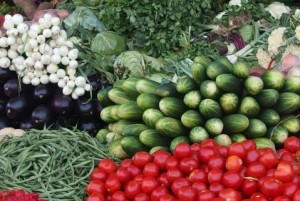Food prices fall fifth year in a row in 2016 – FAO
 Prices of major food commodities declined for the fifth year in a row in 2016, averaging 161.6 points for the year as a whole, some 1.5 per cent below their 2015 levels, according to the Food and Agriculture Organisation (FAO).
Prices of major food commodities declined for the fifth year in a row in 2016, averaging 161.6 points for the year as a whole, some 1.5 per cent below their 2015 levels, according to the Food and Agriculture Organisation (FAO).
Bumper harvests and prospects for staple cereals offset upward pressure on FAO’s Food Price Index from tropical commodities such as sugar and palm oil, where production was impacted by El Nino.
In December, the Index averaged nearly 172 points, unchanged from November, the report said.
2016 was marked by a steady decline in cereal prices, which fell 9.6 per cent from 2015 and were down 39 per cent from their 2011 peak.
At the same time, sugar and vegetable oil prices rose over the year by 34.2 per cent and 11.4 per cent, respectively, it adds.
“Economic uncertainties, including movements in exchange rates, are likely to influence food markets even more so this year,” FAO’s Senior Economist Abdolreza Abbassian was quoted as saying in the report.
FAO’s Cereal Price Index, largely stable since September, increased by 0.5 per cent in the month of December, with rice and maize quotations firming up while larger-than-expected production estimates in Australia, Canada and the Russian Federation led to lower wheat prices.
The report noted that the Vegetable Oil Price Index rose 4.2 per cent from November, capping a double-digit annual gain to reach its highest level since July 2014. Both palm oil and soy oil quotations rose, the former due to low global inventory levels and tight supplies, the latter on the prospect of rising use in the biodiesel sectors in North and South America.
It also said that the Dairy Price Index rose by 3.3 per cent, from November, due primarily to higher prices for butter, cheese and whole milk powder and restrained output in the European Union and Oceania.
The Sugar Price Index, while up almost a third over the year, declined 8.6 per cent in the last month of 2016. The sharp fall was mainly driven by an ongoing weakening of the Brazilian Real against the U.S. dollar, along with a reported 18 per cent jump in expected production in the Centre South, Brazil’s main sugarcane-growing region, it further said.
The Meat Price Index declined 1.1 per cent from its revised November level. Its average value in 2016 was 7 per cent below that of 2015, due mainly to falls in the international prices of bovine and poultry meats.
The FAO Food Price Index is a trade-weighted index tracking international market prices for five key food commodity groups: major cereals, vegetable oils, dairy, meat and sugar.
By Pamela Ofori-Boateng
Copyright ©2017 by Creative Imaginations Publicity
All rights reserved. This news item, or any portion thereof may not be reproduced or used in any manner whatsoever without the express written permission of the publisher except for the use of brief quotations in reviews
